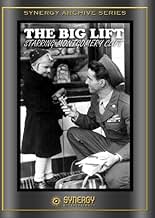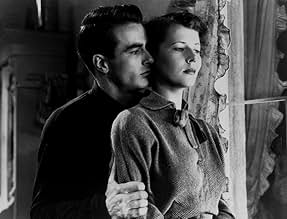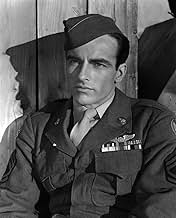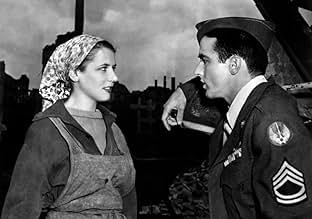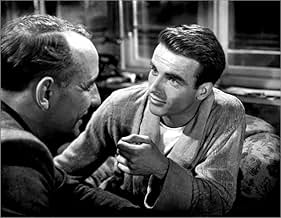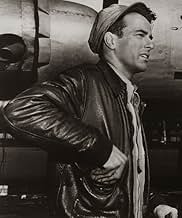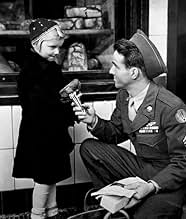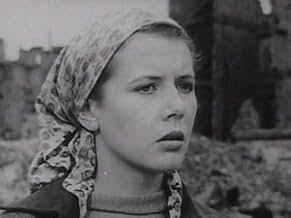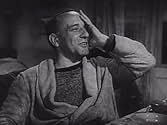NOTE IMDb
6,4/10
1,8 k
MA NOTE
Ajouter une intrigue dans votre langueExperiences of two Air Force sergeants during the 1948 Berlin Airlift.Experiences of two Air Force sergeants during the 1948 Berlin Airlift.Experiences of two Air Force sergeants during the 1948 Berlin Airlift.
- Réalisation
- Scénario
- Casting principal
- Récompenses
- 1 nomination au total
Dante V. Morel
- Dante V. Morel
- (as Capt. Dante V. Morel)
John R. Mason
- John R. Mason
- (as Capt. John R. Mason)
Gail R. Plush
- Gail R. Plush
- (as Capt. Gail R. Plush)
Mack Blevins
- Mack Blevins
- (as Capt. Mack Blevins)
William A. Stewart
- William A. Stewart
- (as Capt. William A. Stewart)
Alfred L. Freiburger
- Alfred L. Freiburger
- (as 1st Lt. Alfred L. Freiburger)
Gerald Arons
- Gerald Arons
- (as 1st Lt. Gerald Arons)
James Wilson
- James Wilson
- (as 1st Lt. James Wilson)
Richard A. Kellogg
- Richard A. Kellogg
- (as 1st Lt. Richard A. Kellogg)
Roy R. Steele
- Roy R. Steele
- (as 1st Lt. Roy R. Steele)
James H. Blankenship
- James H. Blankenship
- (as S/Sgt. James H. Blankenship)
Harold E. Bamford
- Harold E. Bamford
- (as S/Sgt. Harold E. Bamford)
D.R. Simmons
- D.R. Simmons
- (as S/Sgt. D.R. Simmons)
Avis à la une
Montgomery Clift had made his screen debut in 1947 in The Search and in the short period of four years made some films considered now as classics. He was also in Red River. The Heiress, and A Place in the Sun. The Big Lift doesn't belong in that category.
Still it's an intriguing idea that George Seaton. With only five actors in the plot, have the rest of the film be actual army personnel and German civilians. And the amateur cast does fine playing themselves. I guess it saved a whole lot salary. It gives the movie a documentary feel to it.
Monty and Paul Douglas are two American GIs participating in The Berlin Airlift. This was America and it's allies Great Britain and France in a joint effort to airlift supplies into Berlin after Stalin closed off ground access to Berlin in an effort to force the other three occupying powers out of Berlin.
It was a great propaganda victory for the west at the beginning of the Cold War. Fed a hungry city at the same time calling Joe Stalin's bluff. One Harry Truman's best decisions as President, a win/win for sure.
The story involves Clift and Douglas and their interaction with some German civilians they hooked up with. Clift is a sensitive soul as he always is and Douglas is the rough hewn, but kindly type he usually is. They have differing views about the Germans from fighting them in the late War which was only five years old at the time The Big Lift was made.
Let us say that both of them learn something from their experiences by the time the film ends and the Berlin Airlift is officially over.
Not in the pantheon of great films for Clift and Douglas, but an interesting and in this case historical piece of cinema.
Still it's an intriguing idea that George Seaton. With only five actors in the plot, have the rest of the film be actual army personnel and German civilians. And the amateur cast does fine playing themselves. I guess it saved a whole lot salary. It gives the movie a documentary feel to it.
Monty and Paul Douglas are two American GIs participating in The Berlin Airlift. This was America and it's allies Great Britain and France in a joint effort to airlift supplies into Berlin after Stalin closed off ground access to Berlin in an effort to force the other three occupying powers out of Berlin.
It was a great propaganda victory for the west at the beginning of the Cold War. Fed a hungry city at the same time calling Joe Stalin's bluff. One Harry Truman's best decisions as President, a win/win for sure.
The story involves Clift and Douglas and their interaction with some German civilians they hooked up with. Clift is a sensitive soul as he always is and Douglas is the rough hewn, but kindly type he usually is. They have differing views about the Germans from fighting them in the late War which was only five years old at the time The Big Lift was made.
Let us say that both of them learn something from their experiences by the time the film ends and the Berlin Airlift is officially over.
Not in the pantheon of great films for Clift and Douglas, but an interesting and in this case historical piece of cinema.
To say that a film is dated because it was shot on location in 1950 (which, I suppose, is history for most of us now) is pretty inadequate. If anything makes this film still interesting it is BECAUSE it was shot on location in 1950. As a young German who only knows a wealthy comfortable democratic Germany I find the very setting the most intriguing, as is the case with the more serious "Germania anno Zero" by Rosselini. The film has its values, however, but is, admittedly, more on the entertaining side. Nice to spot later Haimatfilm and TV favourites in a Hollywood production. If you like Berlin and don't mind an "old" look, watch Billy Wilder's "One, Two, Three", shot 10 years later. To me as funny as "Some Like it Hot", and that means VERY funny.
Part docu and part drama--it's a look at life in post-war Germany. It's entertaining and educational. Clift made this and "The Search" while in Germany in the late 1940s. Seeing Berlin as it was then-is shocking and eye opening. Then look at Syria, among other
places today, and see how far we haven't come....
This movie surprised me a little bit. From the title and the description of the movie on the DVD jacket, I was expecting to find almost a quasi-documentary about the Berlin airlift. There is some interesting stuff about the airlift. The challenges of flying in and out of Berlin in the era seem to be well documented, and there was what seemed to me to be a wholly authentic picture of American military life in that era, heightened by the fact that aside from Montgomery Clift and Paul Douglas, all the military personnel portrayed played themselves. Having said that, the movie really turned out to be more of a slice of life depiction of what it was like to live in Berlin during these post-war years, and especially during the airlift.
The movie focuses really on the budding relationship between Sgt. MacCullough (Clift) and a German woman he meets and falls in love with (played very well by an actress named Cornell Borchers.) As we watch their relationship develop we are introduced to the situation in Berlin - a city still largely in ruins 5 years after the end of World War II, food and electricity in short supply, hopelessly divided into the different zones of occupation, some Germans struggling with a Nazi legacy, others co-operating with the Russians just to survive, and (in the greatest irony of all) a people totally dependent on the Western allies (who had so recently been their enemies) for their survival. Douglas offered a pretty good portrayal of an American soldier (Kowalski) who had been held in a German POW camp during the War and who struggled with his anti-German feelings all the way through. After being a bit taken aback to discover that this movie wasn't what I had expected it to be, I ended up getting quite caught up in the story. As a very early piece of Cold War movie-making propaganda, it obviously glorifies the American ideal, but it's pretty well put together and enjoyable all the way through. 7/10
The movie focuses really on the budding relationship between Sgt. MacCullough (Clift) and a German woman he meets and falls in love with (played very well by an actress named Cornell Borchers.) As we watch their relationship develop we are introduced to the situation in Berlin - a city still largely in ruins 5 years after the end of World War II, food and electricity in short supply, hopelessly divided into the different zones of occupation, some Germans struggling with a Nazi legacy, others co-operating with the Russians just to survive, and (in the greatest irony of all) a people totally dependent on the Western allies (who had so recently been their enemies) for their survival. Douglas offered a pretty good portrayal of an American soldier (Kowalski) who had been held in a German POW camp during the War and who struggled with his anti-German feelings all the way through. After being a bit taken aback to discover that this movie wasn't what I had expected it to be, I ended up getting quite caught up in the story. As a very early piece of Cold War movie-making propaganda, it obviously glorifies the American ideal, but it's pretty well put together and enjoyable all the way through. 7/10
This is film is one of the best true-life adaptations of an historical event - The Berlin Airlift. It was made on location in Berlin with the full cooperation of the US Military who actually played minor acting roles with the exception of the principal actors. The movie does an excellent job in portraying the bleak situation that the Berliners had to endure as a result of the Soviet blockade along with all the wrecked structures all of the city and the hording of black market staples such as coffee and coal. The most interesting portrayal in this film is the Paul Douglas character of that of an American seargant who has no love for the Germans and goes out of his way to be rude and act like a true "occupation" taking revenge out on a former Nazi prison guard that tormented him while he was a prisoner.
Its probably the most realistic portrayal of an American soldier after the war when technically the US Army was an occupation force along with the British and French. In addition, the portrayal of the German widow who really hated the Americans was probably realistic as well. These characters seemed more than stereotypes which was common in films portraying the political situation at the time. It does a good job in showing how ordinary soldiers and people can have divided loyalties and wrestle with the adverse situation that befell them in Berlin at the time. Truly a time capsule of Postwar Berlin.
Its probably the most realistic portrayal of an American soldier after the war when technically the US Army was an occupation force along with the British and French. In addition, the portrayal of the German widow who really hated the Americans was probably realistic as well. These characters seemed more than stereotypes which was common in films portraying the political situation at the time. It does a good job in showing how ordinary soldiers and people can have divided loyalties and wrestle with the adverse situation that befell them in Berlin at the time. Truly a time capsule of Postwar Berlin.
Le saviez-vous
- AnecdotesThe film was made in occupied Germany. All scenes were photographed in the real locations associated with the story, including episodes in the American, French, British and Russian sectors of Berlin.
- GaffesThroughout the film, Montgomery Clift's army uniform has sergeant stripes, then it doesn't, then it does, etc.etc.
- Citations
Frederica Burkhardt: When you live in a sewer, you soon discover that the sewer rats are best equipped to survive.
- Crédits fousAt the end of the movie, the "Hollywood" stars (Clift, Douglas etc.), are not credited, however a panoramic coda does credit the principal military service members who portrayed themselves in the film. It shows them standing at attention in front of a C-54, with their names and ranks scrolling across.
- ConnexionsReferenced in Dans l'ombre de San Francisco (1950)
Meilleurs choix
Connectez-vous pour évaluer et suivre la liste de favoris afin de recevoir des recommandations personnalisées
- How long is The Big Lift?Alimenté par Alexa
Détails
Box-office
- Montant brut aux États-Unis et au Canada
- 1 300 000 $US
- Durée2 heures
- Couleur
- Rapport de forme
- 1.37 : 1
Contribuer à cette page
Suggérer une modification ou ajouter du contenu manquant

Lacune principale
By what name was La ville écartelée (1950) officially released in India in English?
Répondre
